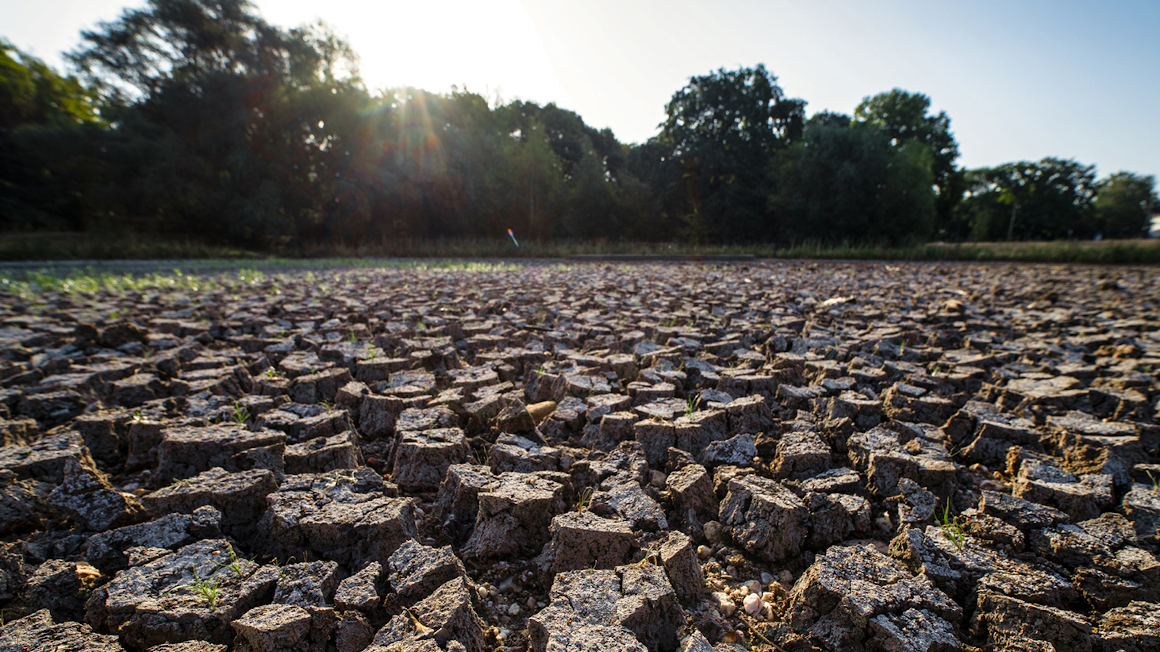Climate change intensifies heat extremes in the soil
Temperatures in the ground are rising faster than in the air. This is the conclusion of a study in which researchers also call for a reassessment of the effects of heat extremes in the ground.

The number of hot days with air temperatures of at least 30 degrees Celsius has been increasing in Germany for years as a result of climate change. This is documented by long-term records of the German Weather Service. In contrast, there is hardly any data on the temperature development in the ground, as the measurements are very complex. In a project coordinated by the Helmholtz Centre for Environmental Research (UFZ), a team of researchers has now examined the development of ground temperature in more detail. In a study published in the journal Nature Climate Change, the team provides answers to the intensity and frequency of heat extremes in the ground as well as their causes and consequences.
Heat extremes in the ground more intense than in the air
As part of the project, data from various sources such as meteorological measuring stations, remote sensing satellites or simulations of earth system models were combined. From this, the researchers fed an index that provides information about the intensity of heat extremes. Specifically, the index was calculated for the 10-centimetre-thick top layer of soil and the air near the surface up to a height of two metres for the years 1996 to 2021. The result: at two-thirds of the 118 meteorological measuring stations evaluated, the ground temperatures were higher than the air temperatures. "This means that heat extremes occur much faster on the ground than in the air," explains the first author of the study, Almudena García-García. According to the study, the intensity of heat extremes in the soil in Central Europe is increasing 0.7 degrees Celsius per decade faster than in the air. This is especially true for Germany, Italy and southern France.
Frequency of heat extremes in the soil increases twice as fast
The calculation of the index for the frequency of heat extremes took into account the proportion of days per month on which the daily maximum temperature was above the statistical limit between 1996 and 2021. Again, this showed that the number of days with heat extremes increases twice as fast on the ground as in the air. "For example, if there are 10% hot days in the ground and in the air every month, a decade later there will be 15% hot days in the air and 20% hot days in the ground," Almudena García-García explains.
The decisive factor is soil moisture, which depends on the ground cover. In contrast to forests, where trees can draw water from deeper soil layers with their roots and thus reduce evaporation losses in summer, arable land and grassland only have water available from the soil near the surface.
Rising ground temperature intensifies hot spells in the air
With their study, the researchers show that the temperature development in the ground is very different from that in the air. The faster increase of heat extremes in the ground can in turn lead to an increase in air temperature, as additional heat is released into the lower atmosphere. "Soil temperature acts as a factor in the feedback between soil moisture and temperature and can thus intensify heat periods in certain regions," explains Jian Peng, co-author and head of the UFZ department for Remote Sensing.
Reassessing the impact of heat extremes
This feedback effect – so the researchers fear – could influence both the soil ecosystem and thus the CO2 storage as well as the water cycle in the soil necessary for agriculture and food production. "In view of these results, studies on the effects of heat extremes, which mainly consider air temperatures but have underestimated the factor of heat extremes in the ground, would have to be re-evaluated," says Jian Peng. Extreme ground temperatures, however, would also intensify periods of heat in the air, the researchers warn. In Central Europe, the warming would then be well over 1.5 degrees.
bb


